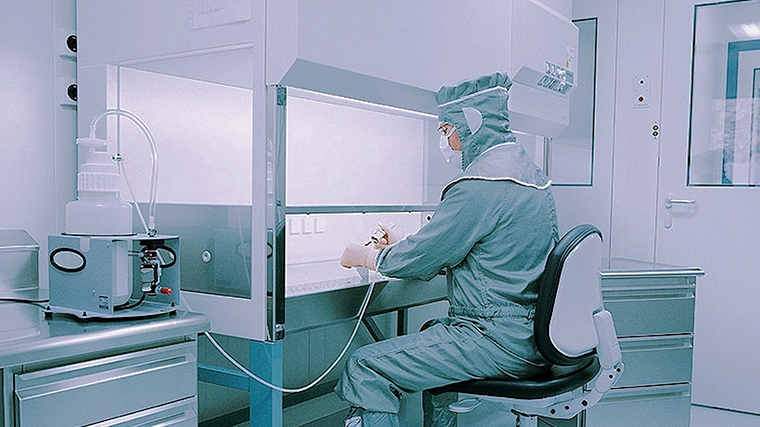Gene therapy is a game-changer in the pharma industry. It has quickly gained recognition as a viable treatment for patients with previously incurable diseases, and most pharma companies are now investing in clinical trials. Others, such as Novartis and BlueBirdBio, already have products on the market.
However, gene therapy manufacturing is still underdeveloped, often using laboratory installations. This creates challenges for larger-scale production and, in particular, automation and manufacturing systems support. With time to market a top priority, manual handling agility still dominates. But the consequence of manual errors is costly in this environment.
The normal approach to larger-scale production is scale-out, so the number of batches to release continuously increases. Manual ‘brute force’ can resolve common issues for a low number of batches, but over time it is vital to increase the automation level to make sure product quality is uniform. Alongside this, applying manufacturing system support can help secure right-first-time regulatory compliance.
So, with large pharma companies now buying small newcomers, how can gene therapy manufacturers evolve and mature their production practices while remaining agile? And should they adopt their new owner’s mature automation and manufacturing system solutions? In this TechTalk article, we will attempt to answer these questions by exploring the key challenges and offering potential solutions.
The key challenges for automation and gene therapy manufacturing
Islands of automation equipment from various vendors
The initial problem lies in the type of equipment needed for gene therapy. Similar to downstream, gene therapies are produced at a limited scale using small reactors and lab equipment. To increase production, companies "scale-out" by increasing the amount of small equipment. However, this is problematic from an automation standpoint, as it creates many unintegrated “islands” of equipment from different vendors.
For many equipment vendors, automation and integration capabilities are an annoyance. Few develop this from the bottom, and rightfully so, as it is highly unlikely they can create competitive solutions. Instead, many enter into OEM (original equipment manufacturer) agreements with established automation vendors.
For many equipment vendors, automation and integration capabilities are an annoyance. Few develop this from the bottom, and rightfully so, as it is highly unlikely they can create competitive solutions.
As a result of this, solutions tend to be low cost with necessary functions at an absolute minimum. The options of batch control and integration capability are also often deselected. And although simple customizations could act as a substitute for a flexible standard product option, equipment vendors tend to be inflexible when it comes to other automation brands.
As a result, manufacturers end up with a basic level of equipment automation that can only be modified and enhanced for certain needs. This means a high number of customized automation islands that vary greatly in automation brands. In addition, this type of production still requires a lot of personnel and a significantly broad skill set.
Laboratory scale automation solutions have limited documentation and traceability
Second, gene therapies are traditionally developed and produced small-scale in laboratories. Therefore, the automation solutions available are intended for laboratory operations. Normally, these cannot produce the necessary documentation to fulfil cGMP requirements, such as batch reports and continued process verification, nor can they be integrated into process intelligence-based optimization. Instead, data is registered manually, resulting in potential data integrity issues and a lack of CFR 21 part 11 compliance.
Establishing data collection at each island is time-consuming. Integrating each individual automation system could help, but this would be a large project that requires a broad skill set as well as deep vendor-specific knowledge.
Time-consuming system operations
Finally, when production is 24 hours a day, systems need to be fit for purpose at all times. To ensure robustness, it is critical to enable services like computer systems compliance, support setup, business continuity, and security and lifecycle management (for version updates).
However, because each system is isolated and often from a different vendor, the workload and skillset needed to keep the portfolio fit-for-purpose is extensive and is an operational burden for the automation engineers on site.
Solving gene therapy automation challenges
As mentioned previously, gene therapy started with small companies in the laboratory world, so many of these problems stem from a lack of maturity. But with large pharma companies now interested in buying and moving production into a large-scale cGMP environment, small companies are at a cross-road in their journey. Should they stay agile and keep their current system, or adopt mature automation solutions from their new owners?
To make the right decision, first large pharma companies must accept that immaturity is not the way forward. Enabling services must be robust.
To make the right decision, first they must accept that immaturity is not the way forward. Enabling services must be robust.
A first step would be to apply the same automation system on all equipment, providing significant relief to enabling services. To do this, companies should carefully analyse their parent company’s automation vendors and the libraries they use. They should then evaluate agility and decide whether to re-use this automation method while taking enabling services into account.
A second step would be to use a centralized batch control using that same automation system. This would not significantly increase the automation level - since the equipment is still single-use with a lot of manual handling - but will solve many CFR Part 11 issues.
A third step would be to introduce a classic uniform data collection approach, using an ISA-88 process model based in a historian (a digital twin). Once implemented, uniform batch reporting can then be based on the historian instead of the equipment automation.
Finally, the fourth step would be to apply a manufacturing execution system with electronic batch records (MES eBR). This automation system would allow for a uniform interface, and relieve the organization of a lot of paperwork, such as batch records and equipment logbooks. Long term, by utilizing MES eBR, companies should strive towards review-by-exception.
Whatever the strategy, the final goal is to find a balance between the level of automation and manual operations, supporting the latter with robust manufacturing execution systems. With the right approach in place, investing in mature automation solutions for gene therapy will help streamline operations, improve compliance and quickly get high-quality products to market.


